How do first impressions influence you? For the last few weeks I’ve been even more sensitive than usual to the their impact, probably because of the wide variation in quality that I experienced. Here are a few recent examples:
We were fortunate to time a stay at our Florida retreat during Minnesota’s last cruel winter onslaught. This trip we wanted to spruce up the yard, so knowing little about landscaping in tropical climates we started with a visit to the most established operation in town. When we finally found an employee, she seemed peeved that we interrupted her plant-watering project. She informed us that only the owner could answer our questions, took our phone number and told us that the owner would call us. Since we were already  there, we wandered the yard, but got confused by the disorganization and poor labeling of stock. We drove a half-mile to their competitor, Gulf View Landscaping, and were completely drawn in by a very knowledgeable, friendly and service-oriented employee. We returned the next day with sketches of our yard, and she patiently guided us through the process of finding the right trees and shrubs.
there, we wandered the yard, but got confused by the disorganization and poor labeling of stock. We drove a half-mile to their competitor, Gulf View Landscaping, and were completely drawn in by a very knowledgeable, friendly and service-oriented employee. We returned the next day with sketches of our yard, and she patiently guided us through the process of finding the right trees and shrubs.
Several days later, a recurring back problem flared up and I hoped to find a local orthopedic or health service for relief. The operator at the first clinic that I called, again, sounded like I was an interruption in her day. In no uncertain terms she made it clear that there was no way they could possibly help me; end of conversation. As it turned out, the second resource that I called also couldn’t help, but the operator sounded genuinely concerned; she suggested several alternatives and offered their phone numbers. If or when I am in need of health services in that part of Florida again, which provider do you think I will call?
Despite horror stories about the air carrier we used getting to Florida, we had a positive experience that trip. On other occasions, however, we hadn’t; the carrier’s on-time and service quality is inconsistent, and not surprisingly, Zagat rates it among the ten worst airlines in the world. The day after my return from Florida I flew Sun Country to Michigan; as usual whenever I fly Sun Country, greetings were positive, and the flight was on time, friendly and comfortable. I have only positive memories of Sun Country experiences, and would choose it for all flights if that was an option. (Truth in disclosure: a family member is a Sun Country flight attendant.)
I’ve walked away from many service establishments never to return, and you likely have too on account of poor initial treatment or impressions; there are usually just too many alternatives. Sometimes a first impression is the last impression.
Here is my advice on ways to convert first impressions into competitive advantage:
- Recognize its importance; as Will Rogers put it: “You never get a second chance to make a first impression.”
- Recognize the value of those who deliver first impressions, many of whom are the “unsung heroes” of our businesses: receptionists, operators, clerks, restaurant servers, etc. Accord them the status and credit they deserve, and hire and pay them accordingly.
- Do some “managing by walking around.” When greeted or treated unprofessionally I’ve often wondered if owners or managers are even aware of their missed opportunities to cash in on positive first impressions. Make sure that you are, and take appropriate action.
- Measure what matters. In addition to observation by walking around, invest in reliable measures of customer perceptions. Make sure that those who play a role creating first impressions know the scores and take responsibility for keeping them high.
- Analyze reasons for unsatisfactory first impressions, and take appropriate corrective action. Bob Mager’s rubric for analyzing performance problems comes to mind: people don’t know what performance is required (tell them,) they don’t know how (train them,) they don’t want to (improve motivation,) or there are barriers of some kind (remove the barriers.) (Mager, Robert F. and Pipe, Peter. Analyzing Performance Problems – Or, You Really Oughta Wanna; The Center For Effective Performance, 1997)
- Align staff, structure and systems (including hiring, performance management, training, measures and especially compensation) with your intentions. As Upton
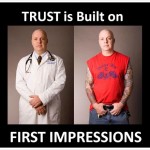 Sinclair said: “It’s hard to get others to understand something when their salary depends on them not understanding it.” No matter what nice customer-centric verbiage is posted, for example, if a service employee’s recognition and pay are not connected to it or maybe even incent the opposite, first impressions will suffer.
Sinclair said: “It’s hard to get others to understand something when their salary depends on them not understanding it.” No matter what nice customer-centric verbiage is posted, for example, if a service employee’s recognition and pay are not connected to it or maybe even incent the opposite, first impressions will suffer.
Oh, by the way: the owner of the first landscape company that we visited did call us back – a week after we purchased and planted our new trees and shrubs from its competitor.
Hats off to all our service providers, especially our “first providers!” Most workers want to know that they make a difference. Let’s remind them and remind ourselves just what a big difference they make.
“You never get a second chance to make a first impression.”
Will Rogers
“A thousand words will not leave so deep an impression as a single deed.”
Henrik Ibsen
Photo credits: homebusiness.uk.com and Anton Diaz / Flickr

 camaraderie, communication and creativity of jazz performances. Ensemble members readily share the lead and support one another; their flexibility and cross-training would be the envy of most teams. Our Sunday’s clarinetist and bass players switched places without missing a beat; the trombonist seemed equally at home with his trombone, coronet or any kind of trumpet. (And on other occasions the cello and more!) Communication was seamless; when to start, when to shift and when to end were communicated by exchange of glances and subtle hand signals. Members of the jazz ensemble had played together a number of years, clearly enjoyed making music together and engaged their audience.
camaraderie, communication and creativity of jazz performances. Ensemble members readily share the lead and support one another; their flexibility and cross-training would be the envy of most teams. Our Sunday’s clarinetist and bass players switched places without missing a beat; the trombonist seemed equally at home with his trombone, coronet or any kind of trumpet. (And on other occasions the cello and more!) Communication was seamless; when to start, when to shift and when to end were communicated by exchange of glances and subtle hand signals. Members of the jazz ensemble had played together a number of years, clearly enjoyed making music together and engaged their audience.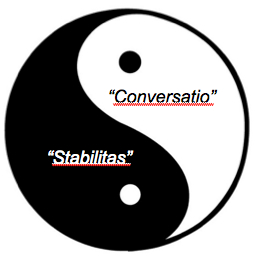 value and “magic,” however, stem from improvisation; no performance is the same. Playing an arrangement note-by-note might sound OK, but wouldn’t be jazz; of course total improv, or everyone “doing his thing,” would also not be jazz, but more like noise. The foundation, or underlying arrangement, and improvisation must both be present for jazz. Likewise, the best kind of alignment in organizations is a combination of foundational principles and goals coupled with flexibility and spontaneity. Jim Collins reinforced this point in his and Jerry Porras’ book
value and “magic,” however, stem from improvisation; no performance is the same. Playing an arrangement note-by-note might sound OK, but wouldn’t be jazz; of course total improv, or everyone “doing his thing,” would also not be jazz, but more like noise. The foundation, or underlying arrangement, and improvisation must both be present for jazz. Likewise, the best kind of alignment in organizations is a combination of foundational principles and goals coupled with flexibility and spontaneity. Jim Collins reinforced this point in his and Jerry Porras’ book 
 non-compliance and crisis communication expenses could be eliminated. We’ve heard that “culture eats strategy;” it also eats compliance and crisis communication. Compliance is mainly about laws, rules, risk management and what not to do; it is externally imposed, usually in response to earlier harmful practices that we may not even have been party to. Are you more likely to do something when forced to, or when you want to, know it is the right thing to do and get reinforced for it? My guess is that you responded the latter; that is an “inside out,” natural motivation for doing the right thing vs. an externally imposed, controlling attempt to cause the same behavior. Culture is the ethos of an organization that influences its members to behave the way they do – for better or worse. The “better or worse” is not just about ethics, but whether an organization attracts and retains the customers and members it desires and achieves its goals.
non-compliance and crisis communication expenses could be eliminated. We’ve heard that “culture eats strategy;” it also eats compliance and crisis communication. Compliance is mainly about laws, rules, risk management and what not to do; it is externally imposed, usually in response to earlier harmful practices that we may not even have been party to. Are you more likely to do something when forced to, or when you want to, know it is the right thing to do and get reinforced for it? My guess is that you responded the latter; that is an “inside out,” natural motivation for doing the right thing vs. an externally imposed, controlling attempt to cause the same behavior. Culture is the ethos of an organization that influences its members to behave the way they do – for better or worse. The “better or worse” is not just about ethics, but whether an organization attracts and retains the customers and members it desires and achieves its goals. cultures assure that organizations are in fact what they aspire to be and live up to their promise. They focus organizational energy and resources on all of what matters, not just short-term effectiveness and results, but on creation of engaging work places and ethical behavior. Doing well in the market place, doing good (or at least no harm) and engaging work are not independent, but integrated challenges; most of what drives ethical cultures also accounts for engaging work places and commercial success. A 2010 CEB study of 34 publicly traded companies revealed that companies which made culture a strategic priority achieved a 16 percent higher average total shareholder return than those which did not.
cultures assure that organizations are in fact what they aspire to be and live up to their promise. They focus organizational energy and resources on all of what matters, not just short-term effectiveness and results, but on creation of engaging work places and ethical behavior. Doing well in the market place, doing good (or at least no harm) and engaging work are not independent, but integrated challenges; most of what drives ethical cultures also accounts for engaging work places and commercial success. A 2010 CEB study of 34 publicly traded companies revealed that companies which made culture a strategic priority achieved a 16 percent higher average total shareholder return than those which did not.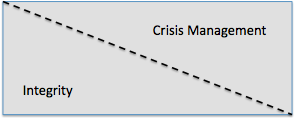
 of Delphi’s advice thousands of years ago: “Know thyself.” Too few of us meet the first requirement for emotional intelligence popularized by Daniel Goleman: self-awareness. It’s unsettling to encounter managers, team members, drivers, neighbors, associates and others in everyday life who act in ways that make it clear they are blind to the impact of their boorish behavior. And how unsettling especially, wishing that we’d known sooner, to discover for the first time how we’ve been blind to the way we come across.
of Delphi’s advice thousands of years ago: “Know thyself.” Too few of us meet the first requirement for emotional intelligence popularized by Daniel Goleman: self-awareness. It’s unsettling to encounter managers, team members, drivers, neighbors, associates and others in everyday life who act in ways that make it clear they are blind to the impact of their boorish behavior. And how unsettling especially, wishing that we’d known sooner, to discover for the first time how we’ve been blind to the way we come across. and seeing patterns to determine what’s true even if not directly observable. It’s good for intuitives to know they will likely “miss some trees for the forest,” just as sensing types may “miss a few forests for the trees.” I use the Hogan Development Survey in some of my work to help clients identify which of eleven personality traits might derail their career. I wonder on how many occasions one of those derailers, excessive “boldness,” contributed to fatal transportation mishaps, exploding oil platforms and collapsed mines?
and seeing patterns to determine what’s true even if not directly observable. It’s good for intuitives to know they will likely “miss some trees for the forest,” just as sensing types may “miss a few forests for the trees.” I use the Hogan Development Survey in some of my work to help clients identify which of eleven personality traits might derail their career. I wonder on how many occasions one of those derailers, excessive “boldness,” contributed to fatal transportation mishaps, exploding oil platforms and collapsed mines? customary ways of reducing team and organizational blind spots. One of the most powerful questions of inTEgro’s Organizational Integrity Survey asks respondents to indicate how well senior leaders model the organization’s stated values. Senior teams are not happy if they learn that they scored 2.5 out of 5, but are in a much better position knowing that so they can do something about it instead of continuing to do more damage.
customary ways of reducing team and organizational blind spots. One of the most powerful questions of inTEgro’s Organizational Integrity Survey asks respondents to indicate how well senior leaders model the organization’s stated values. Senior teams are not happy if they learn that they scored 2.5 out of 5, but are in a much better position knowing that so they can do something about it instead of continuing to do more damage. confident of reaching our destination, when inexplicably momentum and forward progress stop. It may not bother us at first; in fact the quiet and inactivity might initially be welcome in contrast to periods of hyperactivity. After a lengthy time in our own “horse latitudes,” however, energy, activity, prospects and confidence decline. We wait and hope, then wait and hope more for that next breeze or gust of wind. Ships that are stagnant for long periods develop different problems than wear from activity create, including rusting cables, mildew, rot and barnacles that will slow progress if winds resume. In addition to any of his own personal doubts and demons, a ship’s captain has the additional burden of not showing his doubts or fears; that would only aggravate those of an already restless crew.
confident of reaching our destination, when inexplicably momentum and forward progress stop. It may not bother us at first; in fact the quiet and inactivity might initially be welcome in contrast to periods of hyperactivity. After a lengthy time in our own “horse latitudes,” however, energy, activity, prospects and confidence decline. We wait and hope, then wait and hope more for that next breeze or gust of wind. Ships that are stagnant for long periods develop different problems than wear from activity create, including rusting cables, mildew, rot and barnacles that will slow progress if winds resume. In addition to any of his own personal doubts and demons, a ship’s captain has the additional burden of not showing his doubts or fears; that would only aggravate those of an already restless crew. ruthless Captain Bligh (Charles Laughton) commands her crew to man the lifeboats, attach lines and begin towing the mega-ton ship. It reminded us that sometimes in the doldrums, it’s a good idea to just move, to do anything that at keeps us active and seemingly taking charge of our situation. There’s a Russian proverb that comes to mind: “Trust God, but row to shore.” Even if we’re just treading water, it beats sinking.
ruthless Captain Bligh (Charles Laughton) commands her crew to man the lifeboats, attach lines and begin towing the mega-ton ship. It reminded us that sometimes in the doldrums, it’s a good idea to just move, to do anything that at keeps us active and seemingly taking charge of our situation. There’s a Russian proverb that comes to mind: “Trust God, but row to shore.” Even if we’re just treading water, it beats sinking. important to tap resources already available, and to position ourselves where new resources might present themselves (e.g. networking.) If we’re part of a team experiencing the doldrums, especially if we are its leader, it is important to reach out and provide support to each other.
important to tap resources already available, and to position ourselves where new resources might present themselves (e.g. networking.) If we’re part of a team experiencing the doldrums, especially if we are its leader, it is important to reach out and provide support to each other. Oracle’s victory in the America’s Cup race were rigging adjustments that they made after noticing how the New Zealand team consistently bested them upwind. They needed to set aside assumptions about what was and wasn’t possible, and adopted their competitor’s methods to win. When time after time something isn’t going as expected or desired, it likely signals a need to examine not only what we are doing and why we are doing it, but what methods we are employing and what adjustments to make.
Oracle’s victory in the America’s Cup race were rigging adjustments that they made after noticing how the New Zealand team consistently bested them upwind. They needed to set aside assumptions about what was and wasn’t possible, and adopted their competitor’s methods to win. When time after time something isn’t going as expected or desired, it likely signals a need to examine not only what we are doing and why we are doing it, but what methods we are employing and what adjustments to make.
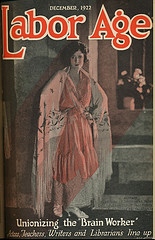 strike. Hundreds of workers were killed in this country in the late 1800s and early 1900s over the right to unionize and bargain for better wages and working conditions. It is fitting that on Labor Day that we acknowledge the positive contributions that organized labor has made to working and living standards.
strike. Hundreds of workers were killed in this country in the late 1800s and early 1900s over the right to unionize and bargain for better wages and working conditions. It is fitting that on Labor Day that we acknowledge the positive contributions that organized labor has made to working and living standards. technological capacities. Education, government, employers and workers themselves will need to step up efforts for closing some large gaps between skills that are required and skills that the workforce possesses.
technological capacities. Education, government, employers and workers themselves will need to step up efforts for closing some large gaps between skills that are required and skills that the workforce possesses. forced a reset in expectations of institutions and their leaders.” Their most recent survey showed that 19% of 26,000 respondents across 26 countries trust business leaders to make the right moral and ethical decisions; 14% trust government leaders to do the same. Other studies have demonstrated strong correlations between integrity, performance, abilities to attract and retain talent, customer loyalty and sustainability. Institutions and their leaders have work to do earning workers’ and customers’ trust.
forced a reset in expectations of institutions and their leaders.” Their most recent survey showed that 19% of 26,000 respondents across 26 countries trust business leaders to make the right moral and ethical decisions; 14% trust government leaders to do the same. Other studies have demonstrated strong correlations between integrity, performance, abilities to attract and retain talent, customer loyalty and sustainability. Institutions and their leaders have work to do earning workers’ and customers’ trust.
 balance and power when we need it. Core strength isn’t as readily visible as the muscles on “muscle beach;” we notice it more in its absence. Core strength is a large part of power generated in the martial arts; it strengthens our backbone, contributes to a healthy upright posture, and is necessary for dynamic sports. Yoga and isometric exercises are particularly beneficial for developing core strength.
balance and power when we need it. Core strength isn’t as readily visible as the muscles on “muscle beach;” we notice it more in its absence. Core strength is a large part of power generated in the martial arts; it strengthens our backbone, contributes to a healthy upright posture, and is necessary for dynamic sports. Yoga and isometric exercises are particularly beneficial for developing core strength. your actions? In those cases you are fueled by your core strength; you will likely not be deterred or distracted easily, and will remain committed to a task far beyond would otherwise be the case. In his classic book
your actions? In those cases you are fueled by your core strength; you will likely not be deterred or distracted easily, and will remain committed to a task far beyond would otherwise be the case. In his classic book 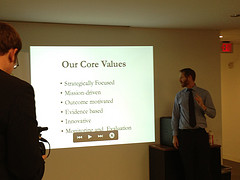 principles. Unless their actions consistently model their words, however, to paraphrase Ralph Waldo Emerson “their actions speak so loudly we no longer hear what they are saying.” Real core strength and the courage of our convictions help us power through challenges and setbacks. As Howard Schulz, Starbucks CEO put it: “Winners use hardships as opportunities to reinforce their values, not abandon them.”
principles. Unless their actions consistently model their words, however, to paraphrase Ralph Waldo Emerson “their actions speak so loudly we no longer hear what they are saying.” Real core strength and the courage of our convictions help us power through challenges and setbacks. As Howard Schulz, Starbucks CEO put it: “Winners use hardships as opportunities to reinforce their values, not abandon them.”
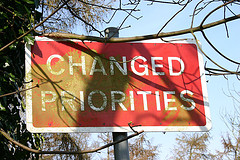 take the form of time for reflection and planning, questioning and reordering priorities, discarding what detracts from execution or no longer contributes value, or simply taking time away as a break or to see things differently. As Marcel Proust said, sometimes “A voyage of discovery is not in seeking new landscapes but seeing with new eyes.” (See
take the form of time for reflection and planning, questioning and reordering priorities, discarding what detracts from execution or no longer contributes value, or simply taking time away as a break or to see things differently. As Marcel Proust said, sometimes “A voyage of discovery is not in seeking new landscapes but seeing with new eyes.” (See  properly and other sufficient safety precautions taken, 11 rig workers wouldn’t have lost their lives. The Coast Guard and hospitals have adopted a practice that originated with aviation: the “two challenge rule:” If someone fails to adequately respond to two or more challenges about questionable observations or actions, it should be assumed that situational awareness has been lost and there is a need for remedial action. (See last month’s “
properly and other sufficient safety precautions taken, 11 rig workers wouldn’t have lost their lives. The Coast Guard and hospitals have adopted a practice that originated with aviation: the “two challenge rule:” If someone fails to adequately respond to two or more challenges about questionable observations or actions, it should be assumed that situational awareness has been lost and there is a need for remedial action. (See last month’s “ a true sense of urgency is foundational for successfully executing change and growth strategies. He distinguishes a true sense of urgency from the complacency or false sense of urgency that usually accompanies unsuccessful change initiatives. Complacent organizations are comfortable with the status quo and blind to impending hazards or opportunities; a false sense of urgency is marked by frenetic and negative energy that is unaligned with clear, coherent strategies or rationales for change. Threats to survival and the urgency for action were all too apparent when the warships of old squared off. Today’s leaders need capabilities for “clearing the deck” that make the urgency for action in a perpetually changing, significantly more complex and nuanced environment more palpable.
a true sense of urgency is foundational for successfully executing change and growth strategies. He distinguishes a true sense of urgency from the complacency or false sense of urgency that usually accompanies unsuccessful change initiatives. Complacent organizations are comfortable with the status quo and blind to impending hazards or opportunities; a false sense of urgency is marked by frenetic and negative energy that is unaligned with clear, coherent strategies or rationales for change. Threats to survival and the urgency for action were all too apparent when the warships of old squared off. Today’s leaders need capabilities for “clearing the deck” that make the urgency for action in a perpetually changing, significantly more complex and nuanced environment more palpable. the human mind is not wired to manage multiple conceptual tasks simultaneously, at least not well. Can anyone honestly say that they haven’t missed a thing when emailing while attending a meeting? Unreasonable workloads and overly stressed workers are unfortunate byproducts of recession-driven cost reduction measures; there comes a time when there is simply a limit to the volume and complexity of tasks that we can handle.
the human mind is not wired to manage multiple conceptual tasks simultaneously, at least not well. Can anyone honestly say that they haven’t missed a thing when emailing while attending a meeting? Unreasonable workloads and overly stressed workers are unfortunate byproducts of recession-driven cost reduction measures; there comes a time when there is simply a limit to the volume and complexity of tasks that we can handle. angle.” Coast Guard patrols post crew at all quarters necessary for a complete picture of surroundings. If there are discrepancies or disagreements about observations or their interpretation, consultation generally improves decisions. Likewise, situational awareness and resulting action planning shouldn’t be only senior leadership’s, strategic planners’ or marketing’s domain.
angle.” Coast Guard patrols post crew at all quarters necessary for a complete picture of surroundings. If there are discrepancies or disagreements about observations or their interpretation, consultation generally improves decisions. Likewise, situational awareness and resulting action planning shouldn’t be only senior leadership’s, strategic planners’ or marketing’s domain.